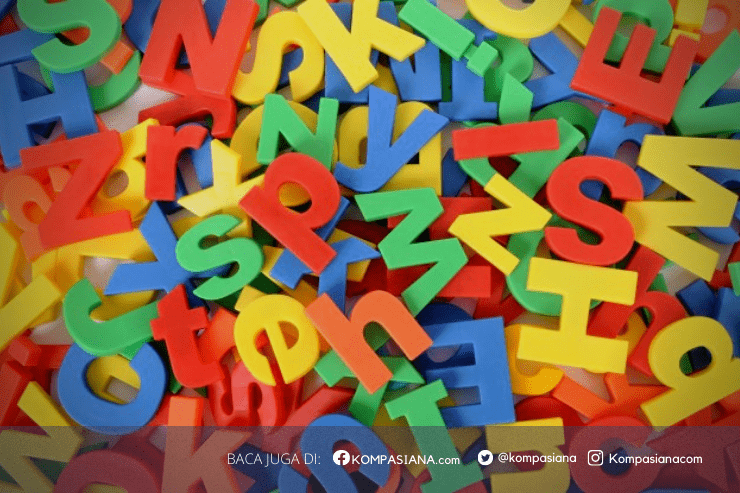THE APPROACHES, METHODS, TECHNIQUES IN LANGUAGE LEARNING
A.DEFINITION OF APPROACHES, METHODS AND TECHNIQUES
1.APPROACHES
An approach describes how language is used and how its constituent parts interlock. In other words it offers a model of language competence. An approach describes how people acquire their knowledge of the language and makes statements about the condition which will promote successful language learning.
2.METHODS
A method is the practical realization of an approach. The originators of a method have arrived at decisions about types of activities, roles of teachers and learners, the kind of material which will be helpful, and some model of syllabus organization. Methods include various procedure and techniques as a part of their standard fare. When methods have fixed procedure, informed by a clearly articulated approach, they are easy to describe. The more all embracing they become, however, the more difficult it is to categories them as real methods in their own right.
3.TECHNIQUES
A way of carrying out a particular task, especially the execution or performance of an artistic work or a scientific procedure.
B.KIND OF APPROACHES
1.CONTENT BASED INSTRUCTION
The focus of a CBI lesson is on the topic or subject matter. During the lesson students are focused on learning about something. This could be anything that interests them from a serious science subject to their favorite pop star or even a topical news story or film. They learn about this subject using the language they are trying to learn, rather than their native language, as a tool for developing knowledge and so they develop their linguistic ability in the target language. This is thought to be a more natural way of developing language ability and one that corresponds more to the way we originally learn our first language.
There are many ways to approach creating a CBI lesson. This is one possible way.
·Preparation
oChoose a subject of interest to students.
oFind three or four suitable sources that deal with different aspects of the subject. These could be websites, reference books, audio or video of lectures or even real people.
·During the lesson
oDivide the class into small groups and assign each group a small research task and a source of information to use to help them fulfill the task.
oThen once they have done their research they form new groups with students that used other information sources and share and compare their information.
oThere should then be some product as the end result of this sharing of information which could take the form of a group report or presentation of some kind.
2.TASK BASED APPROACH
Task -based learning offers an alternative for language teachers. In a task-based lesson the teacher doesn't pre-determine what language will be studied, the lesson is based around the completion of a central task and the language studied is determined by what happens as the students complete it. The lesson follows certain stages.
Pre-task
The teacher introduces the topic and gives the students clear instructions on what they will have to do at the task stage and might help the students to recall some language that may be useful for the task. The pre-task stage can also often include playing a recording of people doing the task. This gives the students a clear model of what will be expected of them. The students can take notes and spend time preparing for the task.
Task
The students complete a task in pairs or groups using the language resources that they have as the teacher monitors and offers encouragement.
Planning
Students prepare a short oral or written report to tell the class what happened during their task. They then practice what they are going to say in their groups. Meanwhile the teacher is available for the students to ask for advice to clear up any language questions they may have.
Report
Students then report back to the class orally or read the written report. The teacher chooses the order of when students will present their reports and may give the students some quick feedback on the content. At this stage the teacher may also play a recording of others doing the same task for the students to compare.
Analysis
The teacher then highlights relevant parts from the text of the recording for the students to analysis. They may ask students to notice interesting features within this text. The teacher can also highlight the language that the students used during the report phase for analysis.
Practice
Finally, the teacher selects language areas to practice based upon the needs of the students and what emerged from the task and report phases. The students then do practice activities to increase their confidence and make a note of useful language.
The advantages of Task Based Approach
- the students are free of language control. In all three stages they must use all their language resources rather than just practising one pre-selected item.
- The students will have a much more varied exposure to language with TBL. They will be exposed to a whole range of lexical phrases, collocations and patterns as well as language forms.
- The language explored arises from the students' needs. This need dictates what will be covered in the lesson rather than a decision made by the teacher or the coursebook.
- It is a strong communicative approach where students spend a lot of time communicating.
- It is enjoyable and motivating.
3.PARTICIPATORY APPROACH
Participatory approach started being widely discussed in the language teaching literature. In some ways the participatory approach is similar to the content based approach in that it begins with content that is meaningful to the students and any forms that are worked upon emerge from that content. It is not the content of subject matter texts, but rather content that is based on issues of concern to students.
The Principles of Participatory Approach :
- What happens in the classroom should be connected with what happens outside that has relevance to the students.
- The curriculum is not a predetermined product, but the result of an ongoing context specific problem posing process.
- Education is most effective when it is experience centered, when it relates to students’ real needs.
- Student learn to see themselves as social and political beings.
- Language skills are taught in service of action for change, rather than isolation.
- A goal of the participatory approach is for students to be evaluating their own learning and to increasingly direct it themselves.
A.KIND OF METHODS
1.THE GRAMMAR-TRANSLATION METHOD
The grammar-translation method also called The classical method. This method was used for the purpose of helping students read and appreciate foreign languages literature. Students would become more familiar with the grammar of their native language better. Foreign language learning would help students grow intellectually, it was recognized that students would probably never use the target language, but the mental exercise of learning it would be beneficial anyway.
a.The Principles of Grammar-Translation Method
The principles of the Grammar Translation Method are organized bellow by answering the ten question. The question are addressed by The Grammar Translation Method.
·What are the goals of teachers who use The Grammar Translation Methods?
A fundamental purpose of learning foreign language is to be able to read literature written in the target language. Students need to learn about the grammar rules and vocabulary of the target language. It is believed that studying a foreign language provides students with good mental exercise witch help develop their minds.
·What is the role of the teacher? What is the role of the students?
The roles are very traditional the teachers is the authority in the classroom. The students do as she says so they can learn was she knows.
·What are some characteristic of the teaching / learning process.
Students study grammar deductively ; that is, they are given the grammar rules and examples, are told to memorize them, and than are asked to apply the rules to other examples. They also learn grammatical paradigms. They memorize native language equivalents for target language vocabulary words.
·What is the nature of student-teacher interaction? What is the nature of student-student interaction?
Most of the interaction in the classroom is from the teacher to the students. There is little students initiation and little student-student interaction.
·How are the feelings of the students dealt with?
There are no principles of the method which relate to this area.
·How is the language viewed? How is culture viewed?
Literary language is considered superior to spoken language and is therefore the language that students study. Culture is viewed consisting of literature and the fine arts.
·What areas of language are emphasized? What language skills are emphasized?
Vocabulary and grammar are emphasized. Reading and writing are the primary skills that the students work on. There is so much less attention given to speaking and listening. Pronunciation receives little, if any attention.
·What is the role of students’ native language?
The meaning of target language is made clear by translating it into the students’ native language. The language that is used in class is mostly the students’ native language.
·How is evaluation accomplished?
Student are asked to translate from their native language to the target language or vice versa are often used.
·How does the teacher respond to student errors?
Having the students get the correct answer is considered very important. If students make errors or do not know an answer, the teacher supplies them with the correct answer.
b.The Techniques of Grammar-Translation Method
·Translation of a literary passage
Students translate a reading passage from the target language into their native language. Students should not translate idioms and the like literally, but rather in a way that shows that they understand their meaning.
·Reading comprehension questions
Students answer question in the target language based on their understanding their meaning.
·Antonyms/ Synonyms
Students are given one set of words and are asked to find antonyms in the reading passage.
·Cognates
Students are taught to recognize cognates by learning the spelling or sound patterns that correspond between the language.
·Deductive Application of Rule
Grammar rules are presented with examples. Students understand a rule, they are asked to apply it to some different examples.
·Fill in The Blanks
Students are given a series of sentences with word missing.
·Memorization
Students are given lists of target language vocabulary words and their native language equivalents and are asked to memorize them.
·Using Words in Sentences
In order to show that students understand the meaning and use of a new vocabulary item, they make up sentences in which they use the new words.
·Composition
The teacher gives the students a topic to write about in the target language.
2.THE DIRECT METHODS
Since the Grammatical Translation Method was not very effective in preparing students to use the target language communicatively, the Direct Method become popular. The Direct Method has one basic rule : No translation is allowed.
a.The Principles of Direct Method
·What are the goals of teacher who use the Direct method?
Teacher who use the Direct Method intend that students learn how to communicate in the target language. In order to do this successfully, students should learn to think in the target language.
·What is the role of the teacher? What is the role of the students?
The students role is less passive than in the Grammatical Translation Method. The teacher and the students are more like partners in the teaching/learning process.
·What are some characteristic of the teaching /learning process?
Students need to associate meaning and the target language directly. When the teacher introduces a new target language word or phrase, he demonstrates the meaning. He never translate into the students’ native language.
·What is the nature of students-teacher interaction? What is the nature of student-student interaction?
The initiation of the interaction goes both ways, from teacher to students and from students to teacher, although the latter is often teacher directed. Students converse with one another as well.
·How is language viewed? How is culture viewed?
Language is primarily spoken, not written. Therefore, students study common, everyday speech in the target language. They also study culture consisting of the history of the people who speak the target language, the geography of the country where the language is spoken, and information about the daily lives of the speakers of the language.
·What areas of language are emphasized? What language skills are emphasized?
Vocabulary is emphasized over grammar. Although work on all skills occurs from the start, oral communication is seen as basic.
·What is the role of the students’ native language?
The students’ native language should not be used in the classroom.
·How is evaluating accomplished?
In the Direct Method students are asked to use the language, not to demonstrate their knowledge about the language. They are asked to do so using both oral and written skills.
·How does the teacher respond to students errors?
The teacher, employing various techniques, tries to get students to self correct whenever possible.
b.The Techniques of Direct Method
·Reading aloud
Students take turns reading sections of a passage, play, or dialog, out loud.
·Question and answer exercise
This exercise is conducted only in the target language. The students are asked questions and answer in full sentences so that they practice new words and grammatical structures.
·Getting students to self-correct
The teacher has the students self correct by asking them to make a choice between what they said and an alternative answer he supplied.
·Conversation practice
The teacher ask students a number of questions in the target language, which the students have to understand to be able to answer correctly.
·Fill in the blank exercise
This technique has already discussed in the Grammar Translation Method, but differs in its application in the Direct Method. All the items are in the target language ; furthermore, no explicit grammar rule would be applied.
·Dictation
The teacher reads the passage three times. The firs time the teacher reads it at normal speed, the second time the teacher reads the passage phrase by phrase, the last time the teacher again reads at a normal speed.
·Map drawing
The class included one example of a technique used to give students listening comprehension practice. The students were given a map with the geographical features unnamed and the teacher gave the students directions.
·Paragraph writing
The teacher in this class asked the students to write a paragraph in their own words. The could have done this from memory, or they could have used the reading passage in the lesson as a model.
3.The Audio Lingual Method
The Audio Lingual method drills students in the use of grammatical sentence pattern. It was thought that the way to acquire the sentence patterns of the target language was through shaping and reinforcement. Learners could overcome the habits of their native language and form the new habits required to be target language speakers.
a.The Principles of Audio Lingual Method
·What are the goals of teachers who use the Audio Lingual Method?
Teachers want their students to be able to use target language communicatively. Their students achieve this by forming new habits in the target language and overcoming the old habits of their native language.
·What is the role of the teacher ? what is the role of the students?
The teacher is like an orchestra leader, directing and controlling the language behavior of her student. Students are imitators of the teacher’s model or the tapes she supplies of model speakers. They follow the teacher’s directions and respond as accurately and as rapidly as possible.
·What are some characteristic of the teaching / learning process?
New vocabulary and structural patterns are presented through dialogs. The dialogs are learned through imitation and repetition.
·What is the nature of student-teacher interaction ? what is the nature of student-student interaction?
There is student-to-student interaction in chain drills or when students take different roles I dialogs, but this interaction teacher is directed. Most of the interaction is between teacher and students and is initiated by the teacher.
·How is the language viewed? How is the culture viewed?
The view of language has been influenced by descriptive linguists. Every language is seen as having its own unique system. The system is comprised of several different levels. The culture consists of the everyday behavior and lifestyle of the target language speakers.
·What areas of language are emphasized? What language skills are emphasized?
Vocabulary is kept to a minimum while the students are mastering the sound system and grammatical patterns. The natural order of skills presentation is adhered to : listening, speaking, reading, writing.
·What is the role of the students’ native language?
The habits of the students’ native language are thought to interfere with the students’ attempts to master the target language.
·how does the teacher respond to the student error?
Student errors are to be avoid ed if at all possible through the teacher’s awareness of where the students will have difficulty and restriction of what they are taught to say.
b.The Techniques of Audio Lingual Method
·Dialog memorization
Dialogs or short conversation between two people are often used to begin a new lesson. Students memorize the dialog through mimicry ; students usually take the role of one person in the dialogue, and the teacher the other.
·Backward build-up (expansion ) drill
The drill is used when a long line of dialog is giving students trouble. The teacher breaks down the line into several parts. The students repeat a part of the sentence, usually the last phrase of the line. Then, following the teacher’s cue, the students expand what they are repeating part by part until they are able to repeat the entire line. The teacher begins with the part at the end of the sentence (and works back ward from there) to keep the intonation of the line as natural as possible.
·Repetition drill
Students are asked to repeat the teacher’s model as accurately and as quickly as possible.
·Chain drill
Chain drill get its name from the chain of conversation that forms around the room as students, one-by-one, ask and answer questions of each other. A chain drill also gives the teacher an opportunity to check each student’s speech.
·Single-slot substitution drill
The major purpose of the drill is to give the students practice in finding filling in the slots of a sentence.
·Multiple-slot substitution drill
The teacher gives cue phrases, one at a time, that fit into different slots in the dialog line. The students must recognized what part of speech each cue is, or at least, where it fits into the sentence and make any other changes, such as subject-verb agreement. Then they say the line, fitting, the cue phrase into the line where it belongs.
·Transformation drill
The teacher gives students a certain kind of sentence patter, an affirmative sentence for example. Students are asked to transform this sentence into a negative sentence..
·Question and answer drill
The drill gives students practice with answering questions. The students should answer the teacher’s questions very quickly. This gives students practice pattern.
·Use of minimal pairs
The teacher works with pairs of words which differ in only one sound : for example, ‘ship/sheep’. Students are first asked to perceive the difference between the two words and later to be able to say the two words. The teacher selects the sound to work on after she has done a contrastive analysis, a comparison between the students’ native language and the language they are studying.
·Complete the dialog
Selected words are erased from dialog students have learned. Students complete the dialog by filling the blanks with the missing words.
·Grammar game
The games are designed to get students to practice a grammar point within a context. Students are able to express themselves, although it is rather limited in this game. Notice there is also a lot of repetition in this game.











